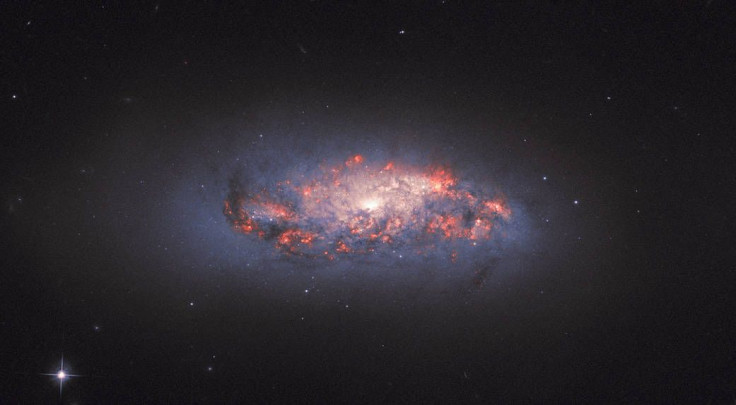Hubble Captures Gorgeous Rose-Colored Galaxy That's Birthing Stars

The Hubble Space Telescope has captured another mesmerizing photo that reminds us there is beauty amid the darkness of outer space.
NASA shared a new image captured by the space telescope of a spiral galaxy located about 70 million light-years away. The galaxy known as NGC 972 was discovered by German-British astronomer William Herschel in 1784.
The image shows bright and colorful pockets of young stars forming in the galaxy. The orange-pink glow seen in the image is hydrogen gas, a key ingredient in star formation, reacting to intense light that streams outward from the newborn stars. The dark patches of black scattered among the glowing patches are cosmic dust.
“Astronomers look for these telltale signs of star formation when they study galaxies throughout the cosmos, as star formation rates, locations, and histories offer critical clues about how these colossal collections of gas and dust have evolved over time,” the European Space Agency described the imagery.
Star births tend to take place in dusty environments, where dust clouds scatter visible light. Thus, infrared observation is often necessary to see young stars. The Hubble is an extremely capable telescope for making these infrared observations. Its Wide Field Camera 3 (WFC3) instrument can make detailed images in visible light and infrared.
Observations made by the Hubble provided astronomers with an unprecedented look at the universe. Since its launch in 1990, the Hubble has made over 1.3 million observations. Scientists using data collected by the space telescope have published more than 15,000 scientific papers, which makes the Hubble one of the most productive scientific instruments ever built.
“Hubble's launch and deployment in April 1990 marked the most significant advance in astronomy since Galileo's telescope. Thanks to five servicing missions and more than 25 years of operation, our view of the universe and our place within it has never been the same,” NASA said.
The telescope is nearly 30 years old but it continues to provide stellar imagery. The telescope may continue to beam images back to Earth for another 10 to 20 years, but a more powerful telescope, the James Webb Space Telescope, is set for launch in 2021.
© Copyright IBTimes 2024. All rights reserved.





















